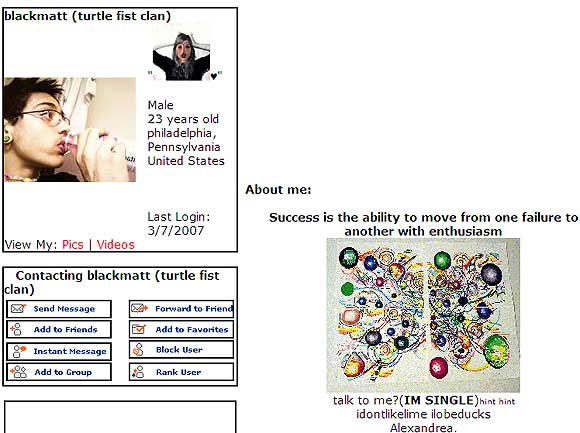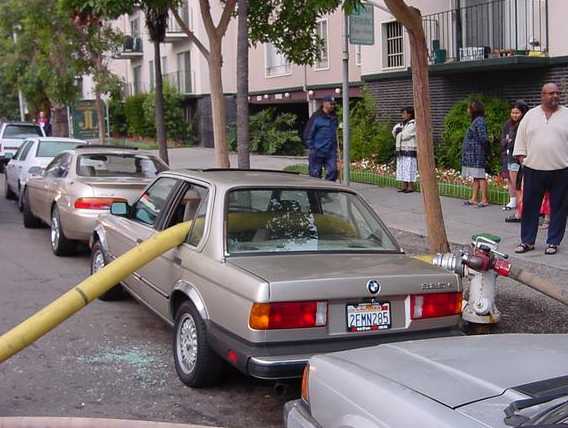View current page
...more recent posts
A blogsitter over at The News Blog while Gillliard is in the hospital (Get well Steve!) has floated a "best science fiction/fantasy books" list that seems a bit heavy on old "hard science" dudes such as Asimov, Heinlein and Clarke. In the comments yours truly tried to add some dystopian/visionary/cyberpunk spice (including a scattering of books written after--gasp!--1980) with these suggested additions:
A.A. Attanasio - The Last Legends of Earth, Radix
Alan Moore/Dave Gibbons - Watchmen
Brian Aldiss - Non-Stop, Hothouse
Philip K. Dick - Ubik, Martian Time Slip
J.G. Ballard - The Crystal World, High Rise
Pohl & Kornbluth - The Space Merchants, Wolfbane
Bruce Sterling - Schismatrix Plus, Heavy Weather
The Strugatskys - Roadside Picnic
Stanislaw Lem - Solaris
Greg Egan - Quarantine
Greg Bear - Blood Music
Octavia Butler - Earthseed novels
Michael Swanwick - The Iron Dragon's Daughter
Doris Piserchia - Doomtime
John Brunner - The Shockwave Rider
Lem, Butler, Pohl & Kornbluth, Brunner, and various Dicks already had their indignant supporters in the comments--just tossing in this blog's two cents on those authors. Cordwainer Smith would be on the list except his best work is in the short story format. H.P. Lovecraft's At the Mountains of Madness, Poe's The Narrative of Arthur Gordon Pym, and H.G. Wells' The Island of Dr. Moreau are some late thoughts.
"Mouse Party 2" [mp3 removed]
Back to the sampler--these are sampled drum hits from the Vermona rhythm synth, using the "kit" made last summer. Tried a couple of new things: making midi controller curves change the snare's pitch and tuning a "chime" (itself a chord) so it could be played like a piano (the melody's pretty basic). A few effects added here and there. Most of the rhythmic interest comes from the "claps."
Update: Discovered this was clipping slightly. Fixed that, and fattened up the sound a bit.

Interesting sounds/patterns/glitches by Mary Benedicto: Loops, Flowers, The Swarm, others... The music is in the Pole/Boards of Canada spectrum (albeit fragmentary) and the visuals are consistently psychedelic/oceanic but also cut up electronically so that you are not allowed to completely "sink into" them.
Also, thanks to Nasty Nets East for introducing me to Silicious (Kathleen Daniel), who rules YouTube with pleasantly deranged music and video of her own creation. The tunes are especially accomplished, melding classic R&B crooning, ESG-style electro-funk, Sun Ra tonal adventurousness, and garageband. (Check out Georg--that Giorgio Moroder bassline with the "la di da di/we like to party" chorus is to die for). I prefer the videos with free-floating Bryce or Poser characters to the obvious Photoshop filters, but it's all pretty great--Henry Darger-esque but with a heart and a conscience and healthy as opposed to brutal sexuality (and in 3D and 4D as opposed to 2D and 4D).









["Planetesimals" video removed for now--these captures are the "piece" (I think it works as a full-sized video but I wasn't happy with the Quicktime).]

artist unknown - hat tip to SHM
Rest in Peace, Jean Baudrillard. Without you the art world since 1982 or so would have lost all meaning and purpose. Let the inevitable hyperrealization of your life and work begin.
text buffer from wikischmedia:
Much of Baudrillard's notoriety as an academic and political commentator comes from his deliberately provocative claim in 1991 that the first Gulf War 'did not take place.' His argument — which sparked heavy criticism from the likes of Chris Norris ... who perceived, in Baudrillard, a denial of empirical events — described the war as the inverse of the Clausewitzian formula: not 'the continuation of politics by other means', but 'the continuation of the absence of politics by other means.' According to Baudrillard, Saddam Hussein was not fighting the Allied Forces, but using the lives of his troops as a form of sacrifice to preserve his power (p. 72 in the 2004 edition); and neither were the Allied Forces fighting Saddam, they were merely dropping 10,000 tonnes of bombs a day as if to prove to themselves there was an enemy to fight (p. 61). So too were the Western media complicit, presenting the war in 'real time' and recycling images of war to propagate the notion that the two enemies were in actual conflict. But, Baudrillard followed, this was not the case: Saddam did not use what military capacity he had (his air force); nor was his power eventually weakened (as he managed to put down the insurgency against him after the war ended). And so, Baudrillard concluded, little politically changed in Iraq: the enemy was not defeated, the victors were not victorious. Ergo, there was no war: the Gulf War did not take place.

hat tip to steve
Update: the text originally published here had little to do with the above image. The picture is complete unto itself, a visual one-liner, not requiring a word of explanation or elucidation. (Except that it's a great bit of real-life performance art.) Unfortunately the photo was "vibrating badly" with the one below it on the page, to use curator Walter Hopps' term for two unharmonious paintings in an exhibition hanging. He would sometimes substitute a lesser picture next to the one he considered the masterpiece to remedy this. On the blog another solution is to have a "text buffer"--some random snippet that insulates the two images from each other. Unfortunately including text in the same blog post (out of sheer laziness of not wanting to create an intervening buffer post, which is an involved process) inevitably invites relating such text to the image above it. It was hoped that Paul Virilio's thoughts about "the accident" (yanked from Wikipedia and now moved to the comments) could be read ironically in tandem with the firehose picture, since what it depicts is not an accident--but that's asking a lot in a fast-reading blog scenario. Thanks to K for noting the problem. This meta type text now serves as the buffer. blah blah
